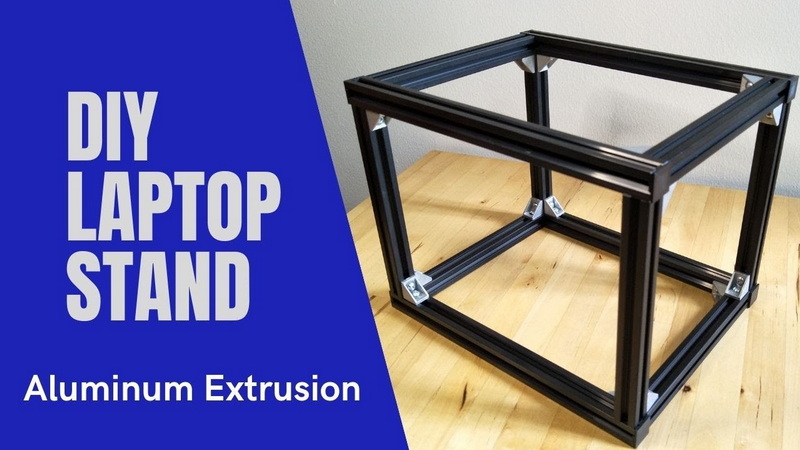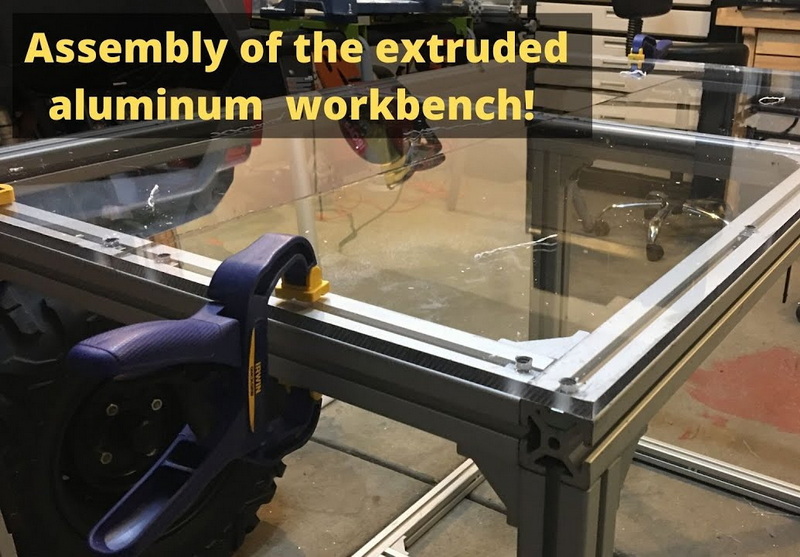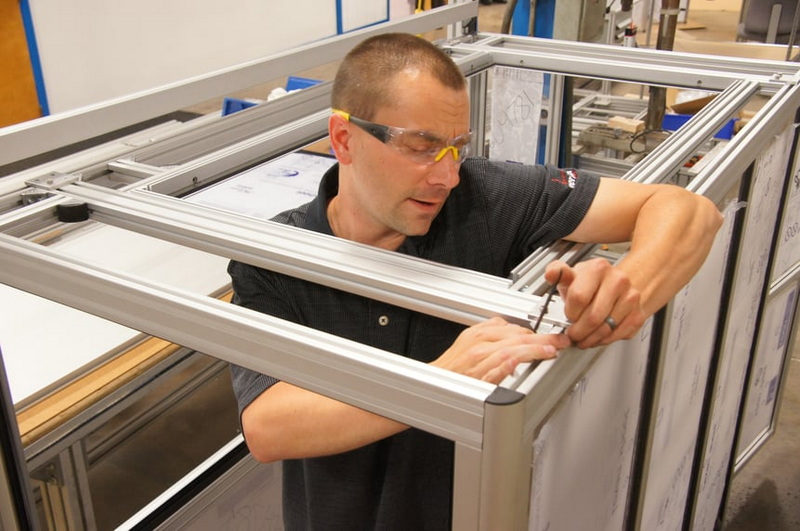Content Menu
● Introduction
● Understanding Aluminum Extrusion
● Advantages of Building with Aluminum Extrusion
>> 1. Lightweight yet Strong
>> 2. Modular and Flexible
>> 3. Corrosion Resistant
>> 4. Cost-Effective
● Essential Tools and Accessories
● Designing Your Project
>> Choosing the Right Profile
>> Planning Your Design
● Step-by-Step Building Process
>> 1. Measure and Cut
>> 2. Prepare Connections
>> 3. Assemble the Frame
>> 4. Add Accessories
>> 5. Level and Adjust
● Advanced Techniques
>> Custom Brackets and Gussets
>> Hybrid Designs
● Real-World Applications
● Maintenance and Care
● Expanding Your Skills
● Conclusion
● Frequently Asked Questions
>> Q1: What are the main advantages of using aluminum extrusion over traditional building materials?
>> Q2: Do I need specialized tools to work with aluminum extrusion?
>> Q3: Can aluminum extrusion be used for outdoor projects?
>> Q4: How do I calculate the strength of my aluminum extrusion structure?
>> Q5: Can I combine aluminum extrusion with other materials in my projects?
Introduction
Aluminum extrusion has revolutionized the way we approach construction and design in various industries. From DIY enthusiasts to professional engineers, this versatile material offers endless possibilities for creating sturdy, lightweight, and customizable structures. In this comprehensive guide, we'll explore the world of aluminum extrusion, its applications, and how you can harness its potential to build virtually anything.

Understanding Aluminum Extrusion
Aluminum extrusion is a process where aluminum alloy is forced through a die with a specific cross-sectional profile. The result is a length of material with a consistent shape that can be cut and assembled to create various structures. The most common type used in construction is T-slot aluminum extrusion, which features channels that allow for easy connection and assembly.
Advantages of Building with Aluminum Extrusion
1. Lightweight yet Strong
Aluminum extrusions offer an excellent strength-to-weight ratio, making them ideal for applications where weight is a concern but structural integrity cannot be compromised.
2. Modular and Flexible
The modular nature of aluminum extrusion allows for easy modifications and expansions to your projects. You can disassemble and reassemble structures with minimal effort.
3. Corrosion Resistant
Aluminum naturally forms a protective oxide layer, making it resistant to rust and corrosion, which is particularly beneficial for outdoor applications.
4. Cost-Effective
While the initial cost might be higher than some alternatives, the longevity, reusability, and low maintenance of aluminum extrusions make them a cost-effective choice in the long run.
Essential Tools and Accessories
Before diving into your aluminum extrusion project, it's important to have the right tools and accessories on hand. Here's a list of essentials:
1. Saw (preferably a miter saw for clean cuts)
2. Drill
3. Allen wrenches
4. T-slot nuts and bolts
5. Corner brackets
6. End caps
7. Joining plates
8. Leveling feet (for floor-standing structures)
Designing Your Project
Choosing the Right Profile
The first step in any aluminum extrusion project is selecting the appropriate profile for your needs. Consider factors such as load-bearing requirements, connection methods, and overall aesthetics. Common profiles include:
- 20x20mm: Ideal for light-duty applications
- 30x30mm: Suitable for medium-duty projects
- 40x40mm and larger: Best for heavy-duty structures
Planning Your Design
Before cutting any material, it's crucial to have a detailed plan. Use CAD software or even simple sketching tools to create a blueprint of your project. This will help you determine the exact lengths of extrusion needed and the types of connectors required.
Step-by-Step Building Process
1. Measure and Cut
Accurately measure and mark your aluminum extrusions according to your design. Use a miter saw for precise, square cuts. Remember the carpenter's adage: measure twice, cut once!
2. Prepare Connections
Depending on your design, you may need to drill holes for bolts or prepare ends for bracket attachments. Always wear safety glasses and follow proper safety procedures when working with power tools.
3. Assemble the Frame
Begin assembling your structure using the appropriate connectors. T-slot nuts slide into the channels of the extrusion, allowing you to securely fasten components together. Start with the base of your structure and work your way up.
4. Add Accessories
Once the main frame is assembled, add any necessary accessories such as panels, wheels, or specialized attachments for your specific application.
5. Level and Adjust
Use leveling feet or adjustable components to ensure your structure is stable and properly aligned. This is particularly important for precision applications or larger structures.
Advanced Techniques
Custom Brackets and Gussets
For unique designs or high-stress points, consider creating custom brackets or gussets. These can be made from aluminum plate or 3D printed for perfect fitment.
Hybrid Designs
Combine aluminum extrusion with other materials like wood or acrylic to create unique, functional designs. This approach can offer the best of both worlds – the strength of aluminum with the aesthetics of other materials.

Real-World Applications
The versatility of aluminum extrusion allows for a wide range of applications across various industries:
1. Manufacturing: Custom workstations, assembly lines, and machine guards
2. Retail: Display stands, kiosks, and modular shelving units
3. Automotive: Racing simulators, vehicle accessories, and testing rigs
4. Home and Office: Standing desks, TV mounts, and custom furniture
5. Robotics: Frames for robots and automated systems
6. 3D Printing: Custom enclosures and printer frames
Maintenance and Care
One of the great advantages of aluminum extrusion is its low maintenance requirements. However, to keep your structures in top condition:
1. Periodically check and tighten connections
2. Clean with mild soap and water to remove dirt and grime
3. Apply a thin coat of dry lubricant to sliding components
4. Inspect for any signs of wear or damage, especially in high-stress areas
Expanding Your Skills
As you become more comfortable working with aluminum extrusion, consider expanding your skills:
1. Learn about different alloys and their properties
2. Experiment with anodizing or powder coating for enhanced aesthetics and durability
3. Explore advanced joining techniques like welding for permanent connections
4. Study structural engineering principles to optimize your designs
Conclusion
Building with aluminum extrusion offers a world of possibilities for creators, engineers, and DIY enthusiasts alike. Its versatility, strength, and ease of use make it an ideal material for a wide range of projects. By understanding the basics of design, assembly, and best practices, you can create professional-grade structures that are both functional and aesthetically pleasing.
Remember, the key to success with aluminum extrusion is planning, precision, and creativity. Don't be afraid to experiment and push the boundaries of what's possible with this incredible material. Whether you're building a simple shelf or a complex industrial machine, aluminum extrusion provides the foundation for bringing your ideas to life.

Now, let's address some common questions about building with aluminum extrusion:
Frequently Asked Questions
Q1: What are the main advantages of using aluminum extrusion over traditional building materials?
A1: Aluminum extrusion offers several advantages, including lightweight yet strong construction, modularity for easy modifications, corrosion resistance, and cost-effectiveness due to its reusability and low maintenance requirements.
Q2: Do I need specialized tools to work with aluminum extrusion?
A2: While specialized tools can be helpful, you can get started with basic tools like a miter saw, drill, and Allen wrenches. As you advance, you may want to invest in more specialized equipment for precise cutting and machining.
Q3: Can aluminum extrusion be used for outdoor projects?
A3: Yes, aluminum extrusion is excellent for outdoor use due to its natural corrosion resistance. However, for coastal or highly corrosive environments, consider using anodized or powder-coated extrusions for additional protection.
Q4: How do I calculate the strength of my aluminum extrusion structure?
A4: Calculating structural strength involves considering factors like the profile size, alloy type, and load distribution. For critical applications, it's best to consult with a structural engineer or use specialized software designed for aluminum extrusion calculations.
Q5: Can I combine aluminum extrusion with other materials in my projects?
A5: Absolutely! Aluminum extrusion works well with a variety of materials. You can easily incorporate wood, acrylic, or metal panels into your designs, creating hybrid structures that combine the benefits of different materials.






















